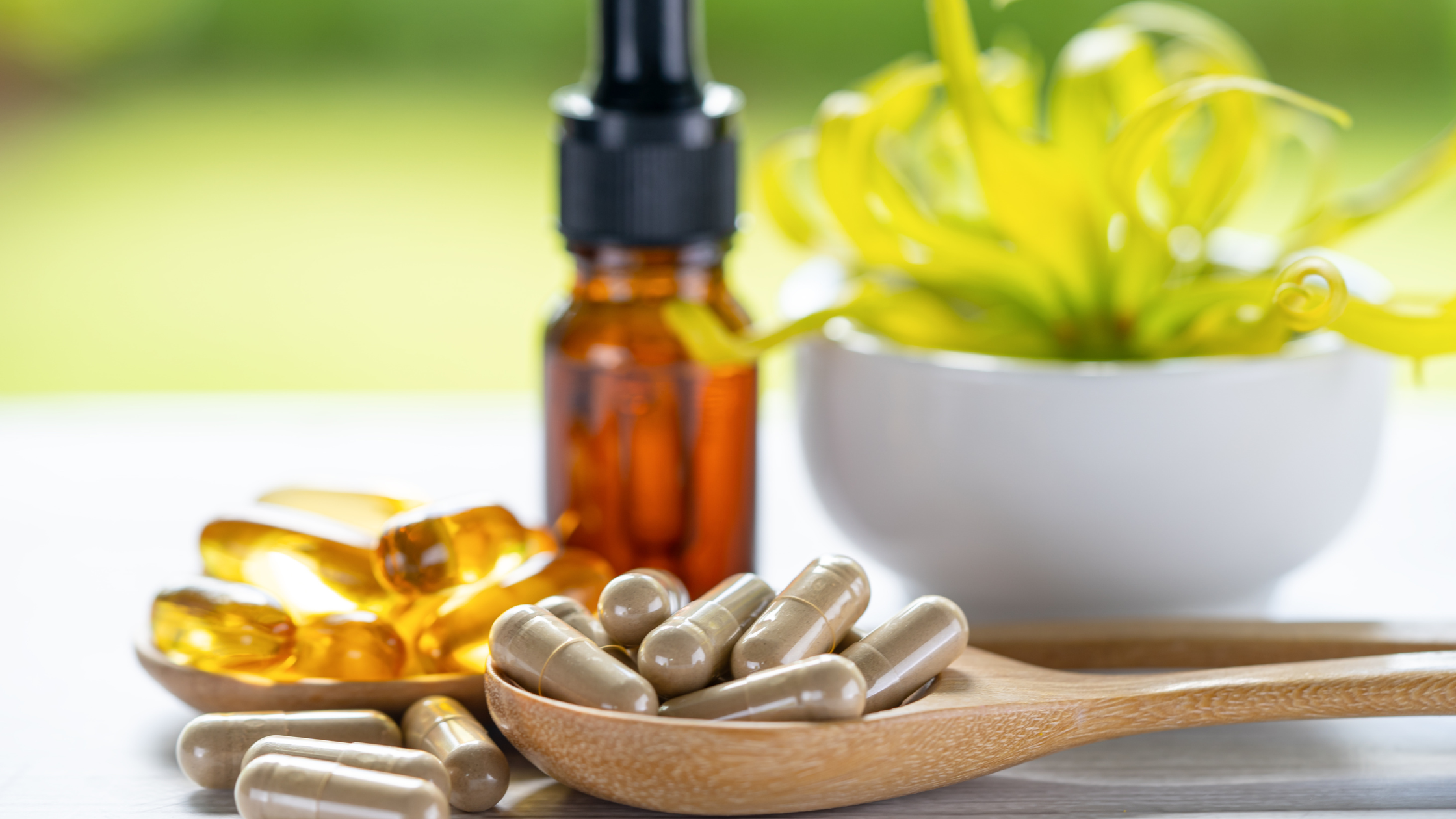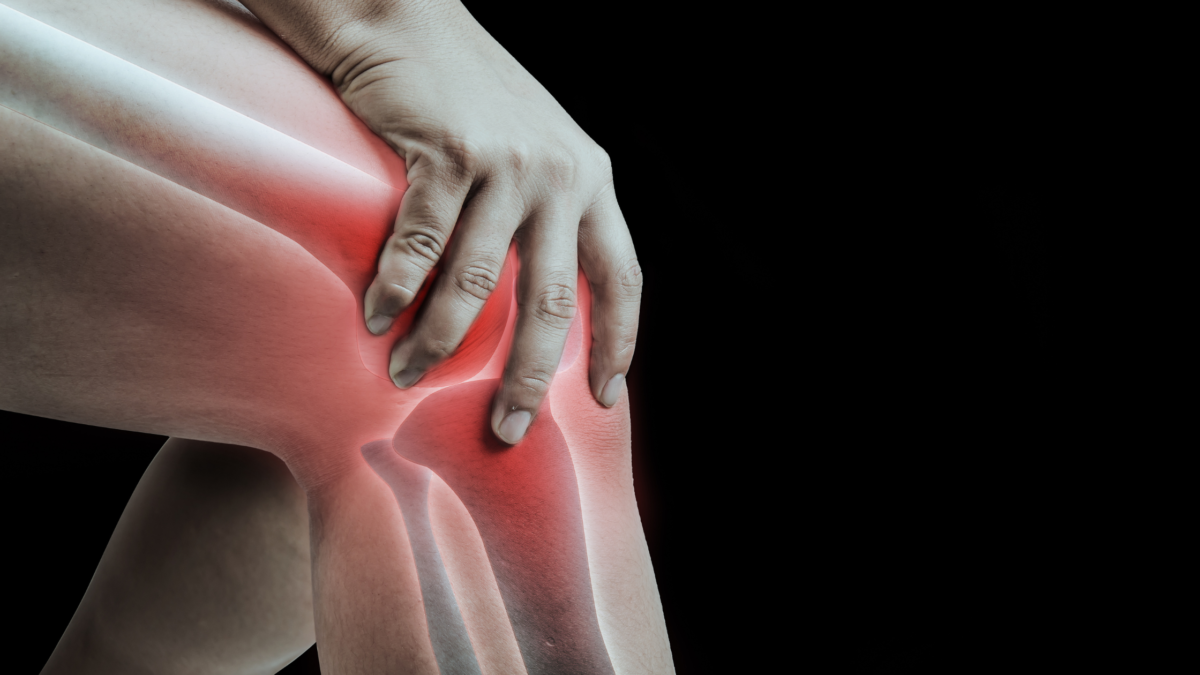


Medically Reviewed By Margaret Etudo. Written By The Vitamins For Woman Team.
Knee joint pain can significantly disrupt your daily activities, making simple tasks feel discouraging. Check out the top natural remedies for knee joint pain and learn proven ways to reduce discomfort, improve mobility, and enjoy pain-free movement naturally.


medically reviewed by margaret etudo, BPharm. written by the vitamins for woman team.
Knee joint pain is a common problem that affects people of all ages, especially women. It can result from injury, overuse, or chronic conditions like arthritis. The knee is a complex hinge joint, composed of bones, cartilage, ligaments, and tendons and bears significant weight and stress, making it prone to wear and tear. The following are the common causes of knee pain:
Osteoarthritis: This has to do with joint cartilage degeneration over time.
Rheumatoid Arthritis: It is an autoimmune condition that causes joint inflammation.
Injuries: This could be through sprains, ligament tears, or fractures from accidents or sports.
Bursitis: This is the inflammation of the fluid-filled sacs cushioning the knee.
Tendonitis: This is as a result of the overuse or repetitive movement of the tendons.
Natural remedies offer a safer approach to managing knee pain without the side effects often associated with pharmaceutical treatments. By choosing natural remedies for knee pain relief, you can take an active role in your health and make choices that align with your lifestyle.
Many choose these alternatives due to their accessibility and effectiveness in reducing inflammation and pain. Below are other reasons and benefits why you should explore the natural remedy option;
Applying heat or cold to the knee can provide immediate relief. This is how it works;
Alternating between heat and cold therapy can enhance relief, but avoid excessive exposure to extreme temperatures. This combination can provide immediate, short-term relief for extreme cases.
Turmeric contains curcumin, a compound known for its powerful anti-inflammatory properties. Research suggests that curcumin helps in reducing knee pain associated with osteoarthritis and rheumatoid arthritis.
Turmeric supplements are widely available in capsule form. Alternatively, you can include turmeric into your cooking, ensure to add black pepper to enhance absorption and effectiveness—add it to soups, stews, rice dishes, or smoothies, but it’s essential to consult with a healthcare provider for personalized recommendations.
Regular exercise strengthens the muscles around the knee joint, improving stability and reducing pain while stretching increases flexibility, improving mobility and preventing stiffness.
Exercises such as swimming, cycling, and walking are excellent options that minimize stress on the knees and promote cardiovascular health.
Stretching routines are focused on the quadriceps, hamstrings, calves, and hip flexors to enhance flexibility and reduce stiffness.
Epsom salt is rich in magnesium sulfate, which helps reduce inflammation and relieve muscle tension. Soaking in an Epsom salt bath can provide soothing relief for sore knees. Add 1-2 cups of Epsom salt to warm bathwater and soak for 15-20 minutes. This practice not only helps with knee pain but also promotes relaxation and aids in detoxifying the body.
Omega-3 fatty acids are essential fats known for their anti-inflammatory properties. They can help in reducing joint pain and stiffness associated with arthritis. Include fatty fish (like salmon and mackerel), flaxseeds, chia seeds, walnuts, and fish oil supplements in your diet as they are great sources.
Tip: Aim for at least two servings of fatty fish per week or consider omega-3 supplements if you don’t consume enough through diet alone.
Nutrition plays an important role in managing knee joint pain. Certain foods contain anti-inflammatory and analgesic properties and this includes;
Eucalyptus oil is known for its soothing properties and it is applied topically to relieve pain. Its cooling effect helps numb the affected area and reduces swelling. This is as a result of its anti-inflammatory properties that can help relieve joint pain. Eucalyptus oil is best used when diluted with a carrier oil e.g coconut oil and applied topically or inhaled.
Borage oil is rich in gamma-linolenic acid (GLA), which helps in reducing inflammation associated with arthritis. Borage oil supplements are available in capsule form and dosage instructions are better if you consult your healthcare provider.
As mentioned earlier, turmeric is not only a supplement but also a spice that can be easily incorporated into daily meals for its anti-inflammatory benefits and also reducing stiffness by enhancing blood flow.
Ginger is well-known for its anti-inflammatory properties that are comparable to some NSAIDs(non-steroidal anti-inflammatory drugs). It works by inhibiting inflammatory enzymes thereby relieving pain and improving circulation. It has been used traditionally to alleviate various types of pain. It can be consumed freshly as tea, added to meals or smoothies or taken as a supplement in a capsule form.
Cat’s claw is an herbal remedy derived from a vine native to South America. It has been shown to have anti-inflammatory effects that benefit those suffering from joint pain by suppressing the overactive immune responses. Cat’s claw is available as capsules or tinctures; consult with a healthcare provider for appropriate dosing.
Cinnamon has antioxidant and anti-inflammatory effects that assist in relieving knee pain and improving joint health when added to foods or taken as a supplement. You can sprinkle cinnamon on oatmeal, yogurt, or smoothies; consider taking cinnamon capsules if you prefer supplementation.
This is a traditional Chinese herb that has been used for centuries to treat inflammatory conditions and auto-immune joint pain such as arthritis. It also has available supplements; consult with a healthcare professional regarding proper dosage.
Aloe vera gel can be applied topically to soothe inflamed joints and may also be consumed as juice for its overall health benefits. Ensure it is free from added sugars or preservatives.
White willow bark contains salicin, which has similar properties to aspirin and may help relieve pain naturally without gastrointestinal side effects often associated with NSAIDs (non-steroidal anti-inflammatory drugs). White willow bark is available as capsules or teas; follow recommended dosages on product labels.
Devil’s claw is a herbal remedy known for its anti-inflammatory effects in osteoarthritis patients, thanks to its harpagoside content. It is available in capsules or tinctures.
Green tea contains polyphenols that have anti-inflammatory effects. Regular consumption may help reduce symptoms associated with arthritis and improve overall joint health.
When using herbs for knee joint pain relief, keep the following tips in mind:
In addition to herbal remedies, the following are other ways you can tackle knee joint pain:
Ginger cannot “cure” joint pain, it possesses anti-inflammatory properties that help reduce symptoms associated with conditions like arthritis when consumed regularly.
Turmeric is often referred to as one of the strongest natural anti-inflammatory spices due to its active compound curcumin— this is also backed by studies showing its efficacy in reducing inflammation in the body.
Several plants are shown to be beneficial and effective for joint pain relief, including; turmeric, devil’s claw, white willow bark etc.
Knee joint pain greatly affects the impact on your quality of life, but natural remedies offer a safe, effective alternative for managing discomfort. Anti-inflammatory herbs such as turmeric and ginger to therapies like acupuncture and massage, these are approaches that can restore mobility and reduce pain. Incorporating these remedies into your routine–alongside proper diet and exercise is a great way to reduce discomfort and enhance your quality of life.
Remember, always consult your healthcare provider before starting any new treatment regimen to ensure it aligns with your health needs.
[…] Read: Top 5 Natural Remedies for Knee Joint Pain […]
Your point of view caught my eye and was very interesting. Thanks. I have a question for you.
Your point of view caught my eye and was very interesting. Thanks. I have a question for you.
I don’t think the title of your article matches the content lol. Just kidding, mainly because I had some doubts after reading the article.